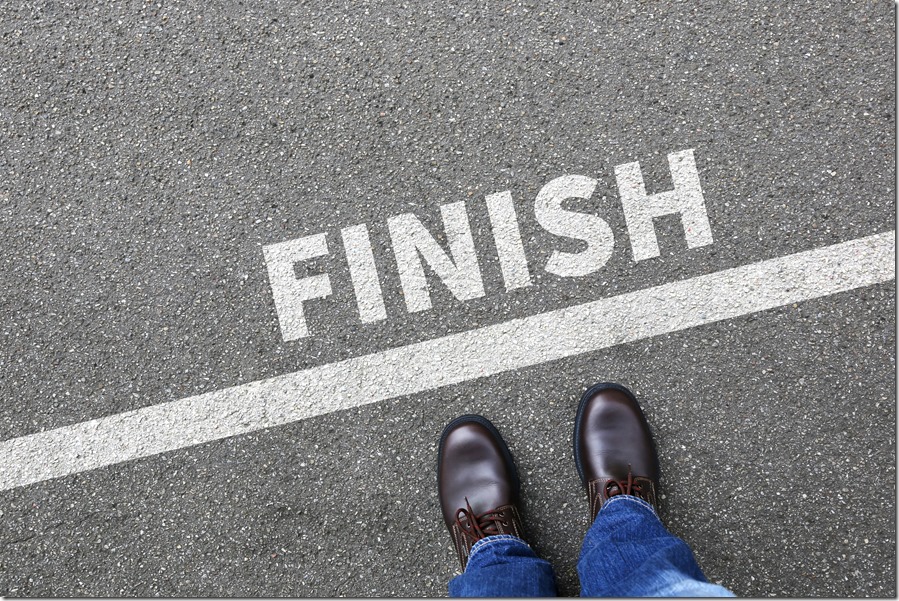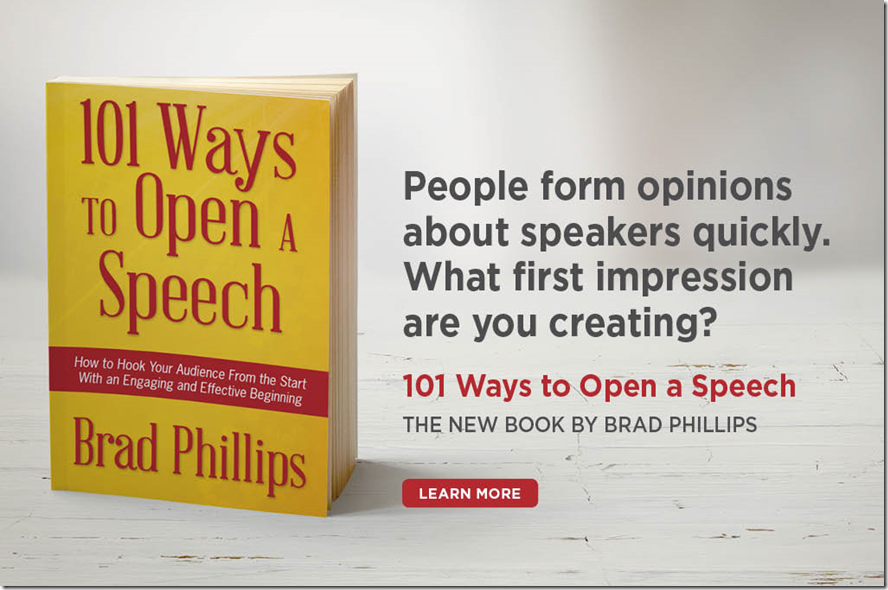How To Close A Speech (Public Speaking Essentials)
Musicians write songs that build to rousing crescendos. Attorneys deliver emotionally moving closing arguments to impressionable jurors. Pastry chefs leave diners on a high note by ending their meals with beautifully plated desserts.
Throughout our culture, we recognize how important a big finish is. We want that blockbuster action film to end with a dazzling car chase, our favorite basketball team to win a nail-biter by sinking a decisive shot at the last second, and the annual fireworks display to conclude with an awesome sequence of rapid-fire bursts.
And yet…when it comes to public speaking, many presenters finish not on a high note but a mumble. It’s as if they saw the end in sight and took the first possible opportunity to flee the stage. Instead of offering one final thought that would linger in the minds of audience members long after they walked away, they limped to the finish line with an abrupt phrase such as:
- So feel free to email or call me with any questions.”
- “That’s all I have today.”
- “Thank you for your time.”
- “Do you have any questions?”
- “Ummm…thanks.”
A presentation’s close is one of its most important parts. It’s your last chance to make an impression, your final opportunity to inspire your audience, persuade them, move them to action, or change their way of thinking. If your open got them into the tent, your close should have them exiting it while humming your tune (in this case, your ABSO).
There are many unforgettable ways to close a speech; the next blog post will offer 15 possibilities. But first, it’s worth offering a clarification. For many talks—particularly those in which you’ll take audience questions—there’s not one close. There are two.
The first close serves to wrap up the main portion of your presentation, after which you will open the floor to questions.
The second close occurs after you answer the final question, allowing you to take back the floor one last time to deliver a closing thought.
The First Close
Your first close begins once you conclude the main body of your presentation. When moving from the body to the close, signal to the audience that the end is approaching (such a signal breaks the pattern, which helps regain the attention of audience members whose focus has drifted). There are two primary ways to transition to your close: through the use of spoken transitions and changes to your vocal and physical delivery.
You can use phrases such as “In conclusion” or “I’d like to summarize what I said this morning,” but it’s better to craft a more seamless transition, such as:
- “We’ve spoken today about the very real challenges we face and a few potential solutions. Where does that leave us?”
- “You might be wondering what comes next?”
- “I’ve spent the past hour talking about today’s trends in our industry. I’d like to finish by looking ahead five years to what we’ll be talking about then.”
- “After hearing more about these refugees’ stories today, I hope you’re as motivated as I am to support them. I’ll leave you with three specific things you can do to begin helping them before the sun sets this evening.”
You can also use a vocal or physical change to indicate that you’ve reached the close, such as: taking a several-second pause; increasing your volume or pace if you’ve been speaking softly or slowly, or vice versa; moving to the opposite side of the stage; or turning off the PowerPoint projector.
Once you’ve finished your first close (which can be any of the 15 session wrappers in the next blog post), open the floor to questions using a line such as, “I’d like to make a few concluding comments, but before I do, I’d love to hear your thoughts or answer any questions you might have.” Doing so indicates to the audience that you intend to take the floor back, albeit briefly, at the end of the question period.
The Second Close
Imagine you’re speaking at a conference with strict time limits. A conference planner in the back of the room holds up two fingers to signal that you should finish within two minutes.
With just enough time to take one final question, you call on a man who proceeds to tell you why he disagrees with a key point you made in your presentation. Just as he concludes his question, the planner flashes you the “wrap it up!” sign. You quickly answer the question, thank the audience, and close the session. Suddenly, the freshest thought in the minds of each audience member as they leave isn’t yours — it’s the question posed by their fellow audience member.
Here’s an alternative scenario: when you see the planner’s two fingers go up, you say (with a warm smile), “I’d like to take one final question. Sir, please go ahead, but I’m going to ask you to please ask it in 15 seconds or less.”
He ends up taking one minutes instead of 15 seconds — which is okay, because it still gives you 30 seconds to answer his question and 30 more to leave the audience with your final thought as opposed to his.
Hopefully, your Q&A period won’t end in such dramatic fashion. In either case, the second close can be short — just long enough to reinforce your ABSO one final time. You can use any of the 15 speech closes in the next lesson; even speech openers can offer useful ideas. Among the choices, you can project an unexpected quote onto the screen and infuse it with relevant context, pose a final rhetorical question, or deliver a final appeal that encourages the audience’s involvement.
Finally, your delivery of the second close should make clear to the audience that you’ve finished speaking. You might slow your pace on your final line or use inflection to indicate that you’re finished (“And THAT is why I’m confident that we’re going to become THE industry leader within three years”). An optional “thank you” after the second close puts the final bow on your talk.
In the next post, you’ll find 15 great ways to close a speech. Don’t miss it!





